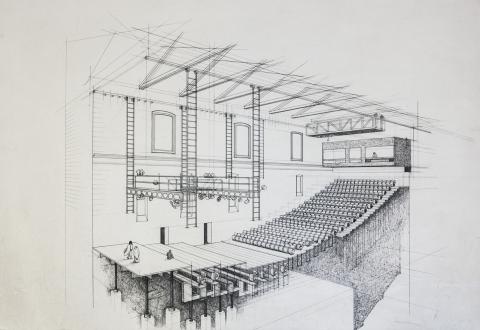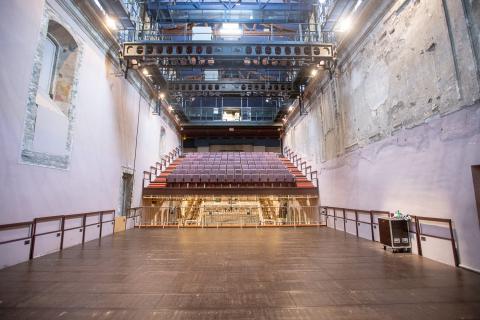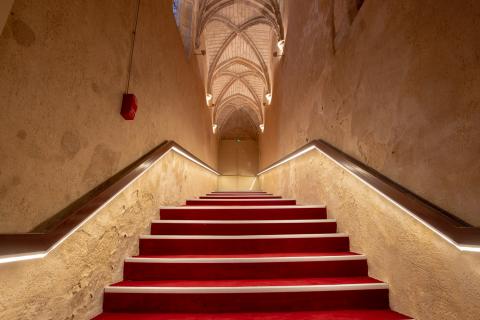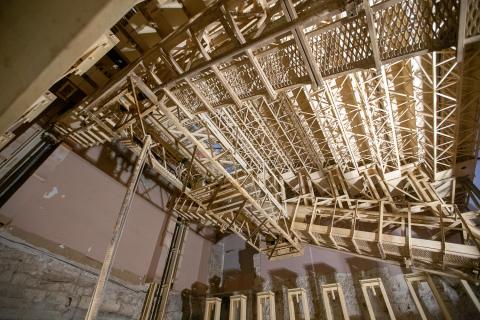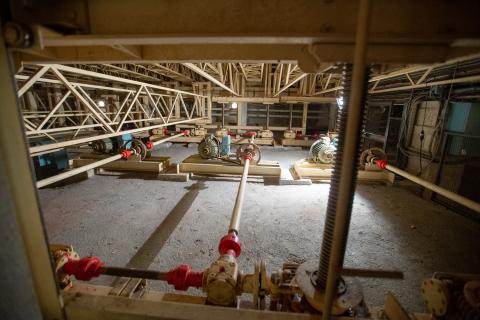Tinel is a regional term which means dining room and reception room. In ancient documents this space was referred to as the Consistorial Room, or Tinel. This is where consistories, or meetings of the college of the cardinals took place. This room was also used for ceremonial meals at the time of Pope Innocent VI.
This Tinel was an extension to Cardinal Aubert’s palace and dates from the years immediately following his accession to the papal throne. Most likely after his death the room was used as the monks’ refectory. Monks only ate together on Sundays and holidays, or at the time of a funeral of one of the monks.
We now know that the frescoes in Saint John the Baptist chapel continued into the Tinel. One side of the room showed the life of the first monks and anchorites and the other side told the story of Saint Bruno, the founder of the Carthusian order. One has to imagine the Tinel entirely covered with frescoes depicting the joys of solitary life.
The Tinel was converted into a performance hall in 1979 with theatre seats that can be raised and lowered using a jackscrew system. The Tinel thus now holds plays, concerts and meetings.
(Above): the stage in the Tinel. At the back, the glass door which opens onto the Chapel of the Frescoes.
The Tinel used for a seminar on theatre writing (above right).


